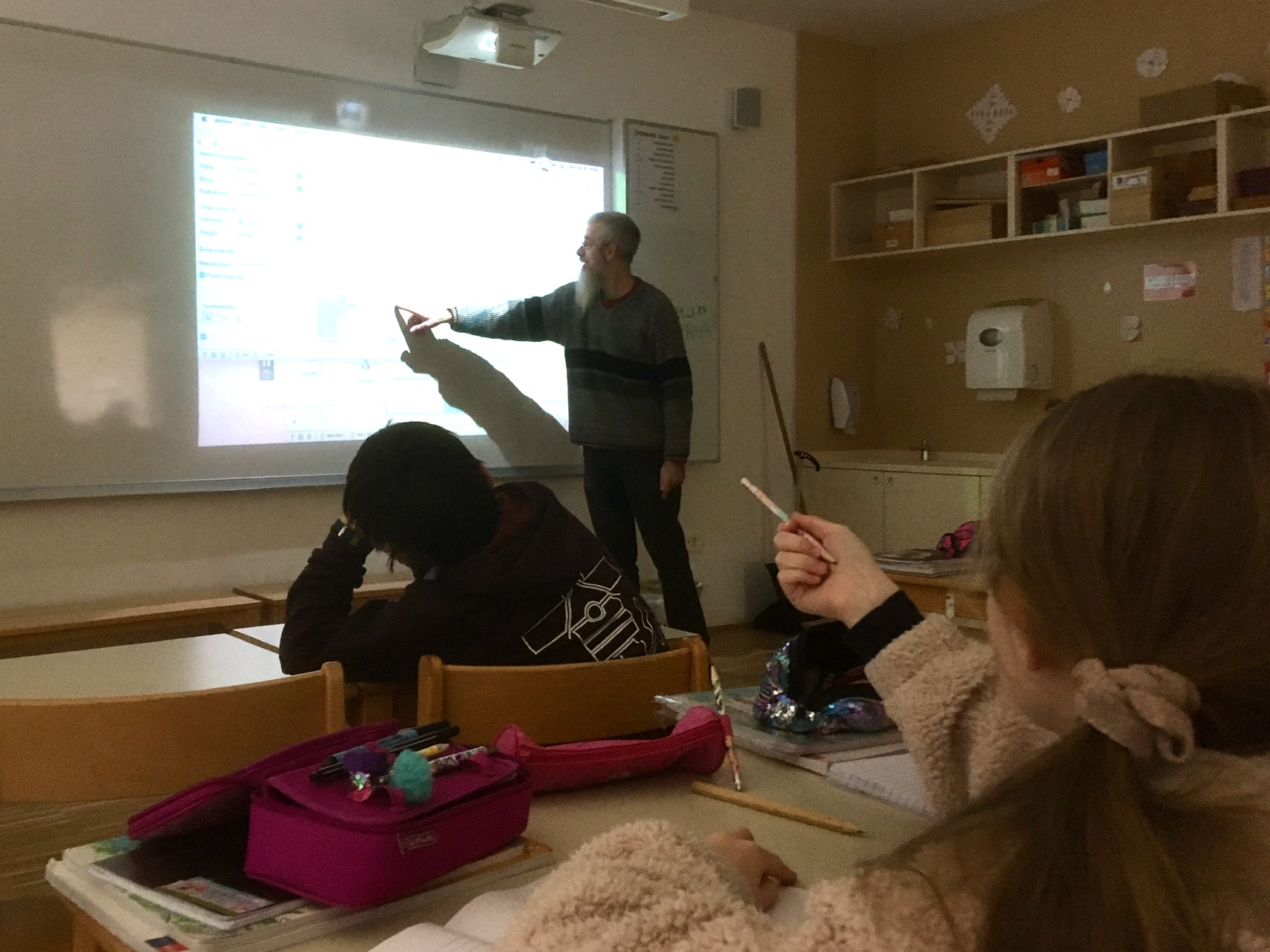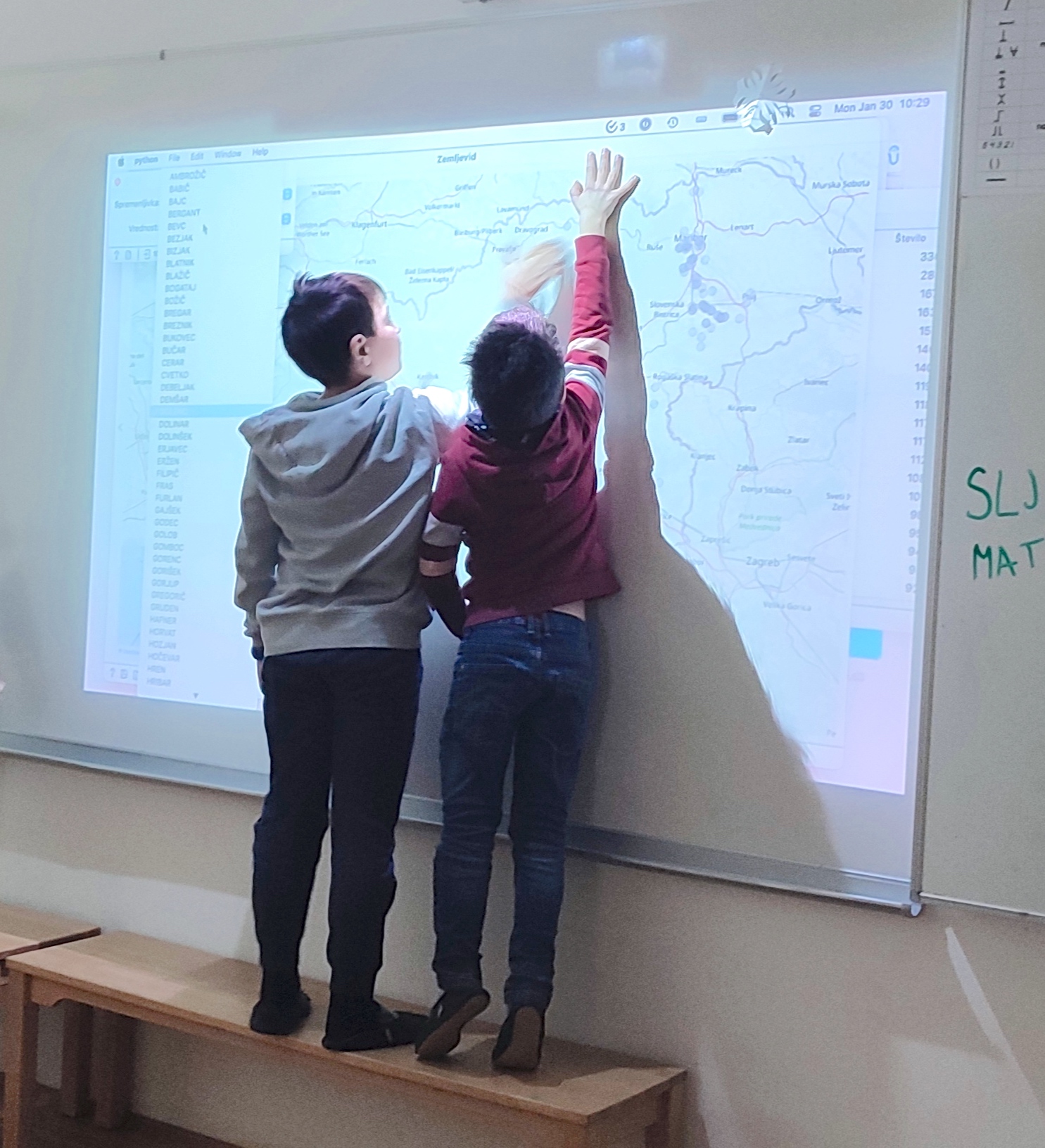
Tell me Your Surname and I'll Guess Where You're From
This time we tried the same thing, activity related to surnames in two different classes - the fourth and the seventh. Just to check, if students learn anything in three years at school. :)
In both cases, we asked the students why we have surnames at all, and got the same reply: without them, we would not be able to distinguish between people with the same name. Every time we mentioned Ema, for example, we would need to explain whether we mean the one from the fourth, or the one from the seventh grade. In the seventh grade, we also got another interesting answer: we need surnames so that we know who our ancestors are.
Indeed, the difference between first names and surnames is that surnames are “hereditary”. A person with the surname Prešeren (in Slovene: merry or cheerful) doesn’t necessarily laugh all the time. Or write upbeat poems. The students were eager to confirm that they know about Prešeren, who is known for not quite fitting the description of “prešeren”. (France Prešeren is considered the greatest Slovenian poet, and many of his poems are about his unfulfilled love, lost childhood dreams, hardship of Slovenian people - you get the picture). However, it’s probable that one of his ancestors was of the more cheerful type.
We then spent a lot of time looking at the origins of surnames, types of surnames in particular - deriving from names, occupations, animals, and finally, those indicating someone’s origin. The topic turned out to be so engaging and the students were so excited that it was often difficult to move on. Everyone knew of someone with an interesting surname, sometimes relevant for our conversation, sometimes less so. The students wanted to know where the so-and-so’s surname might have come from. Almost everybody could confirm how their relatives with a such-and-such surname were indeed from a such-and-such place.
In both classes, we were saved by the surname Novak. Even the fourth graders acknowledged that Novaks are everywhere, and in the seventh grade someone mentioned that they had spotted a bunch of Novaks on the gravestones in the Šentvid cemetery. That was a perfect prompt to ask ourselves why is it that Novaks can be found everywhere, and if there is a surname, where this is not the case.
Curiosity ignited, we started looking at surnames on the map. We asked the students where we are likely to find the surname Gorenjc. In the fourth grade, they were rather unanimous: in Gorenjska. In the seventh, it dawned on some of them (you know, that moment as a teacher, when you see a student’s eyes suddenly sparkle!): no, no, that wouldn’t make sense. People with the surname Gorenjc are not in Gorenjska, they must be … somewhere else. Of course. And there are plenty of Dolenc everywhere too, only in Dolenjska would we look for them in vain.
The differences between the fourth and the seventh grade were most interesting in what followed. Where can we find people with the surname Korošec? We first needed to clarify where Koroška is. In the fourth grade, they were pointing all over the map: some to Prekmurje, others to Bela Krajina, only those who pointed to Koper were quickly corrected by the others that that was actually Primorska. In the end, we finally managed to locate Koroška somewhere in the north of the country, and found that the people originating from there (based on the surname) have migrated a bit towards the south - that is to northern Štajerska, and to Gorenjska - around Kranj and Tržič. In the seventh grade, though, there were at least no problems with locating Koroška.

Where is Koroška?
We then divided Slovenia into regions based on the similarity of surnames. And back came the geography fun once more: Slovenia can be divided into two regions, separated by the river that runs through Maribor. Which river would that be? In the fourth grade, we heard a list of all the Slovenian rivers: the students’ favourites are Sava and Soča, and they also know about Krka. Apparently, even the Ljubljanica river could run through Maribor. (For Slovenians this is funny because Ljubljana and Maribor are the largest Slovenian cities, who are rivals in many senses, in particular when it comes to sports. The name Ljubljanica literally means the river that runs through Ljubljana. Not Maribor.) Well, or maybe at that time, we weren’t thinking about Maribor anymore, but already listing all the rivers that came to mind. In the end, we decided that Drava was the right answer. When we got to dividing the country into four groups, however, we were already running a bit late, so we revealed, without giving them the chance to guess first, that - surprise surprise, it is Mura that flows past Murska Sobota.

Division of Slovenia based on Surnames
The students found the lesson interesting. What about us, what did we learn from trying out this activity?
There is more than enough material for one hour, especially if we capitulate in curbing the students’ enthusiasm - of which there will be plenty. After the lesson, we discussed this very issue with the teacher who accompanied us. There are some topics where students tend to get really engaged, and we certainly wouldn’t want to stop that. On the other hand, we still want to take the lesson somewhere, and get somewhere. Typically, there is no issue with letting students seemingly take the lead and drive the lesson, while the teacher actually remains in control (this can be achieved through interventions such as asking the right questions, or guiding responses to elicit the desired answer). When the students’ interest is too high, however, this becomes more challenging. This was one of those times.
The intended background from the field of data analysis is clustering. We could have shown it live, but in the end, virtually all we ended up saying about it was “we’ll tell the computer to form clusters”. There was simply not enough time.
One more thing: this activity fits neither in Slovenian nor in Geography or History in particular, but in all three at the same time. In class, we got stuck several times in the sense of, “Mmm, the border between the Austrian and the Hungarian part of the Austro-Hungarian Empire went over there, right?”, or “Friuli spans to the sea … or does it?”. Of course, it is best to be honest with students: if we don’t know, we say that we don’t know, or we tell them we believe it is so and so but we are not sure. Clearly, it is even better if we can answer them. As you can see, this lesson requires quite a broad range of knowledge and experience. But perhaps … perhaps it can be turned into something more than a school lesson, namely a longer “interdisciplinary” activity on the topic of surname research? We’ll see: the purpose of this project is not to cement a list of activities, but to explore what other interesting things can be done in school, isn’t it?